Liping Zhu
Conditional Independence Test Based on Transport Maps
Apr 13, 2025Abstract:Testing conditional independence between two random vectors given a third is a fundamental and challenging problem in statistics, particularly in multivariate nonparametric settings due to the complexity of conditional structures. We propose a novel framework for testing conditional independence using transport maps. At the population level, we show that two well-defined transport maps can transform the conditional independence test into an unconditional independence test, this substantially simplifies the problem. These transport maps are estimated from data using conditional continuous normalizing flow models. Within this framework, we derive a test statistic and prove its consistency under both the null and alternative hypotheses. A permutation-based procedure is employed to evaluate the significance of the test. We validate the proposed method through extensive simulations and real-data analysis. Our numerical studies demonstrate the practical effectiveness of the proposed method for conditional independence testing.
Efficient Distributed Learning over Decentralized Networks with Convoluted Support Vector Machine
Mar 10, 2025Abstract:This paper addresses the problem of efficiently classifying high-dimensional data over decentralized networks. Penalized support vector machines (SVMs) are widely used for high-dimensional classification tasks. However, the double nonsmoothness of the objective function poses significant challenges in developing efficient decentralized learning methods. Many existing procedures suffer from slow, sublinear convergence rates. To overcome this limitation, we consider a convolution-based smoothing technique for the nonsmooth hinge loss function. The resulting loss function remains convex and smooth. We then develop an efficient generalized alternating direction method of multipliers (ADMM) algorithm for solving penalized SVM over decentralized networks. Our theoretical contributions are twofold. First, we establish that our generalized ADMM algorithm achieves provable linear convergence with a simple implementation. Second, after a sufficient number of ADMM iterations, the final sparse estimator attains near-optimal statistical convergence and accurately recovers the true support of the underlying parameters. Extensive numerical experiments on both simulated and real-world datasets validate our theoretical findings.
Enhancing and Dissecting Crowd Counting By Synthetic Data
Jan 22, 2022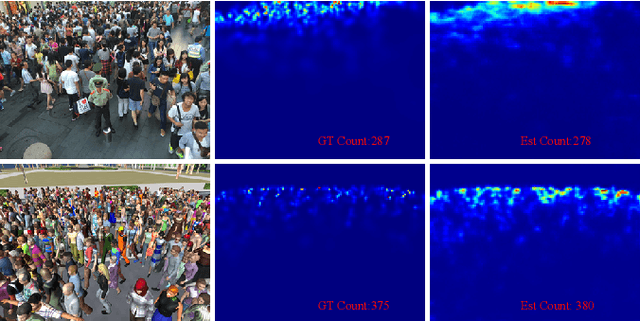
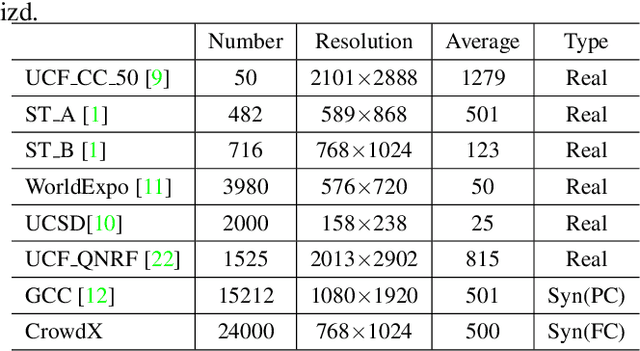


Abstract:In this article, we propose a simulated crowd counting dataset CrowdX, which has a large scale, accurate labeling, parameterized realization, and high fidelity. The experimental results of using this dataset as data enhancement show that the performance of the proposed streamlined and efficient benchmark network ESA-Net can be improved by 8.4\%. The other two classic heterogeneous architectures MCNN and CSRNet pre-trained on CrowdX also show significant performance improvements. Considering many influencing factors determine performance, such as background, camera angle, human density, and resolution. Although these factors are important, there is still a lack of research on how they affect crowd counting. Thanks to the CrowdX dataset with rich annotation information, we conduct a large number of data-driven comparative experiments to analyze these factors. Our research provides a reference for a deeper understanding of the crowd counting problem and puts forward some useful suggestions in the actual deployment of the algorithm.
BBA-net: A bi-branch attention network for crowd counting
Jan 22, 2022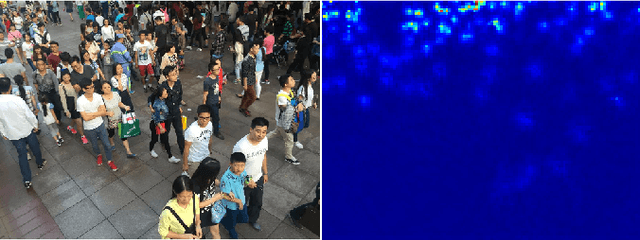
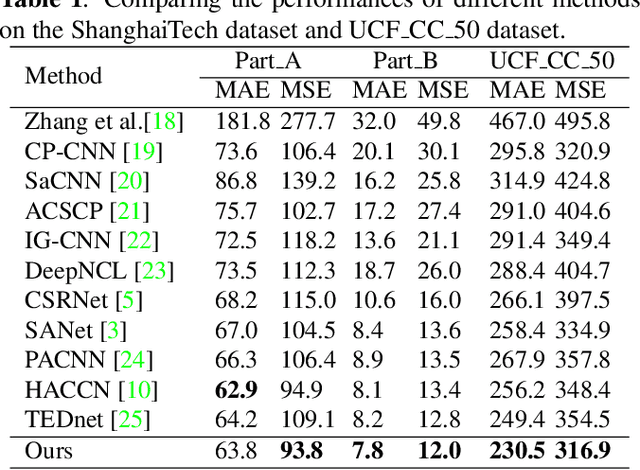
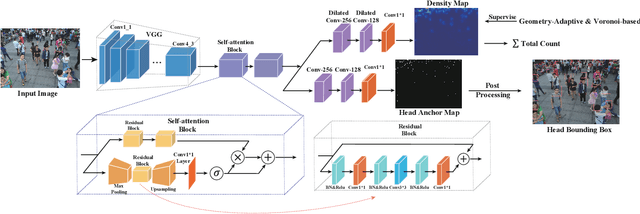

Abstract:In the field of crowd counting, the current mainstream CNN-based regression methods simply extract the density information of pedestrians without finding the position of each person. This makes the output of the network often found to contain incorrect responses, which may erroneously estimate the total number and not conducive to the interpretation of the algorithm. To this end, we propose a Bi-Branch Attention Network (BBA-NET) for crowd counting, which has three innovation points. i) A two-branch architecture is used to estimate the density information and location information separately. ii) Attention mechanism is used to facilitate feature extraction, which can reduce false responses. iii) A new density map generation method combining geometric adaptation and Voronoi split is introduced. Our method can integrate the pedestrian's head and body information to enhance the feature expression ability of the density map. Extensive experiments performed on two public datasets show that our method achieves a lower crowd counting error compared to other state-of-the-art methods.
 Add to Chrome
Add to Chrome Add to Firefox
Add to Firefox Add to Edge
Add to Edge